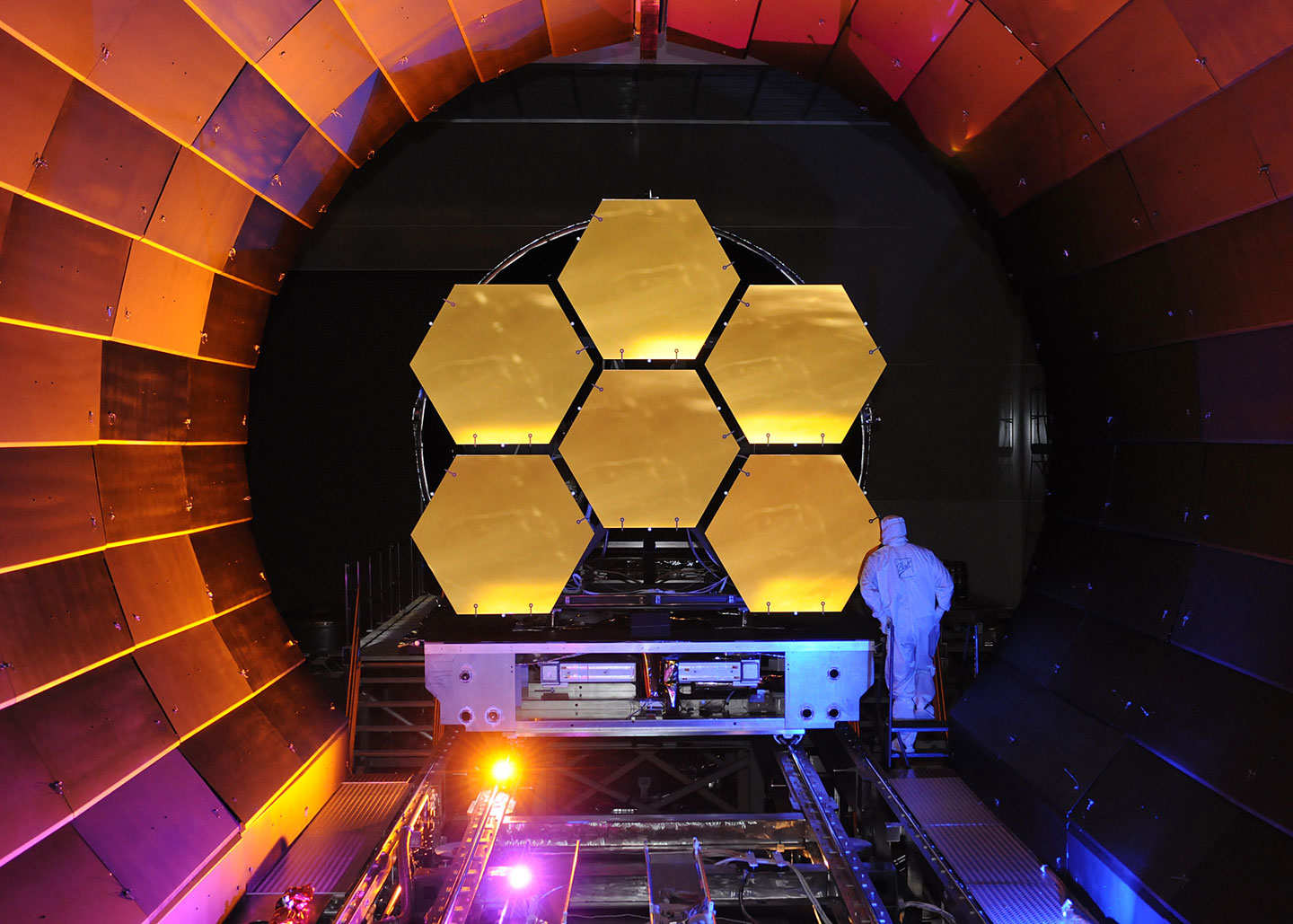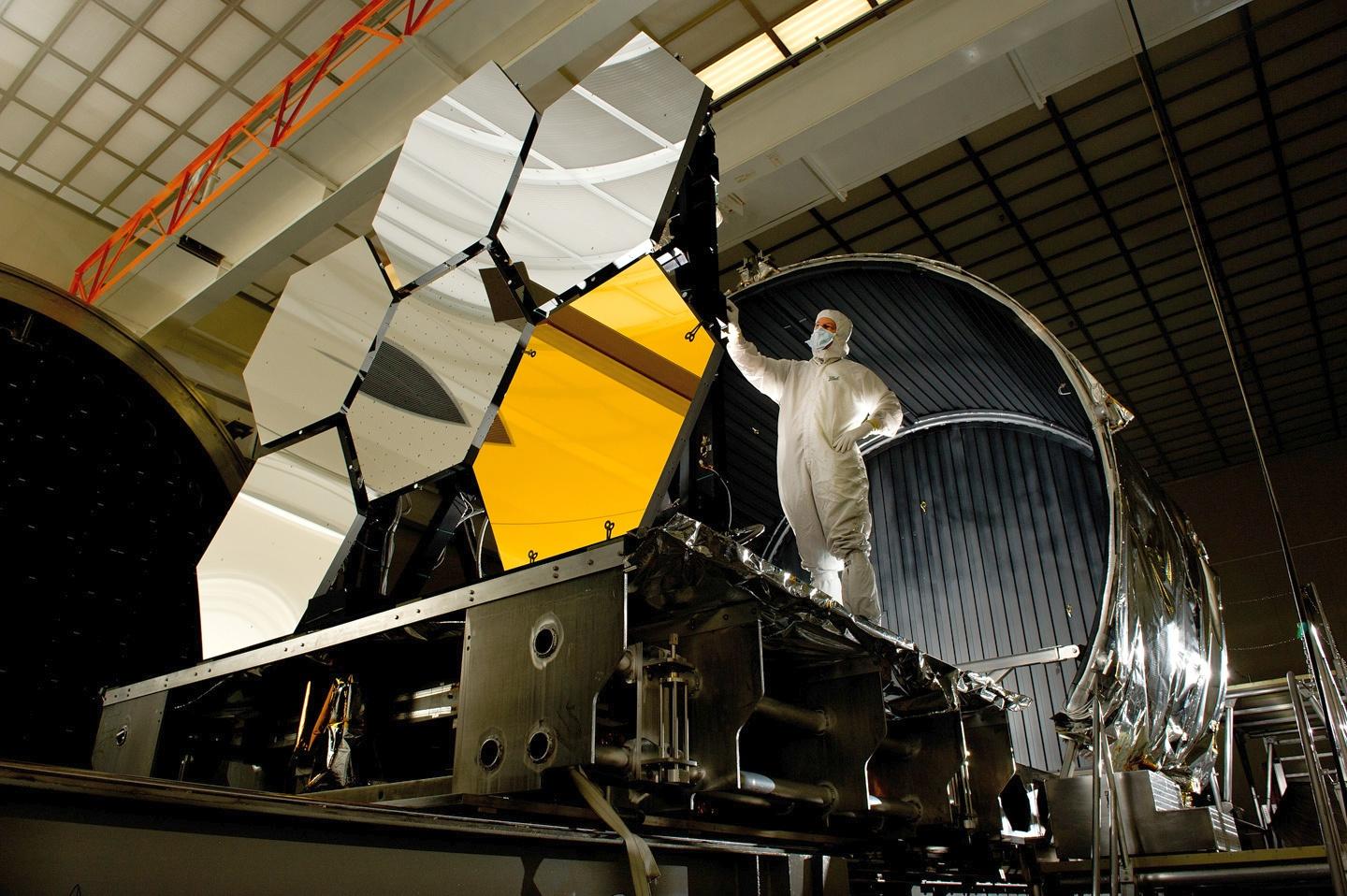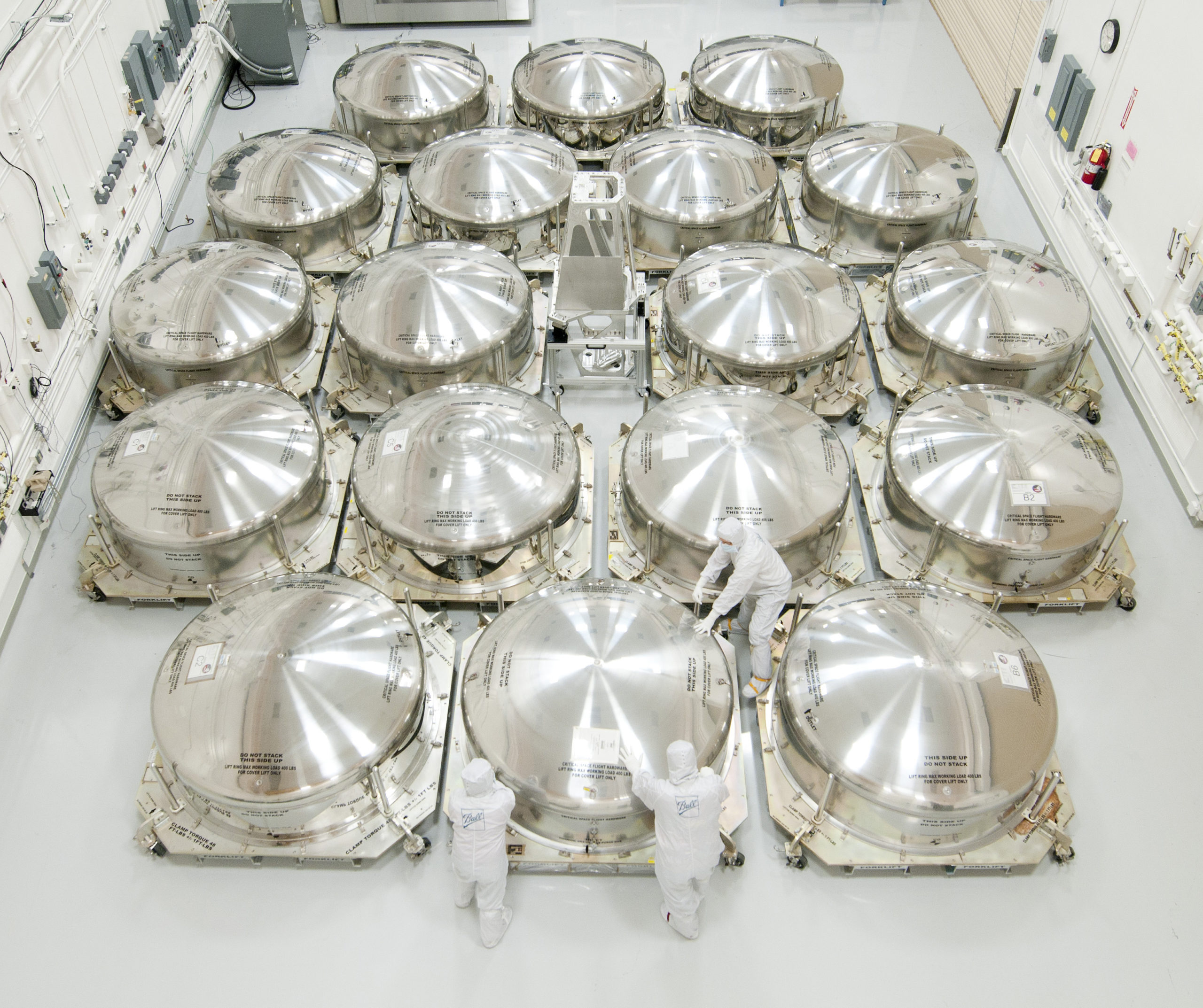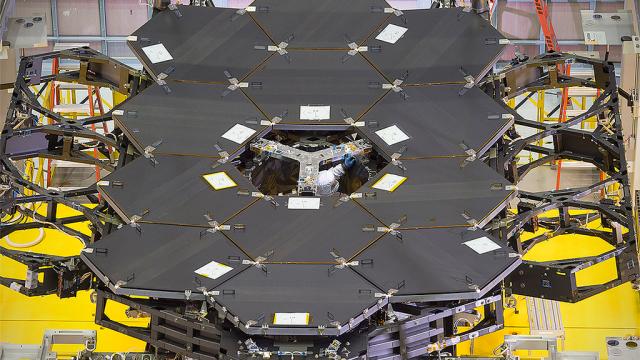The James Webb Space Telescope construction team doesn’t waste time! After hitting the halfway-point in December, they’re now up to 12 of 18 mirrors installed. Check out the livestream from the cleanroom for building this fantastic telescope now, or forever hold your peace!
The 18 mirror segments will fit together to create a single 6.5m primary mirror. A secondary mirror and pair of tertiary mirrors round out the system. While the final diameters are merely respectable here on Earth, it is a colossal undertaking for a space telescope. A single mirror would be difficult to launch, so the engineering team developed this innovative plan to fold the segments up for launch and allow the telescope to blossom to full size once in space.
The telescope’s Optical Telescope Element Manager Lee Feinberg explained just how ambitious this project is:
“Aligning the primary mirror segments as though they are a single large mirror means each mirror is aligned to 1/10,000th the thickness of a human hair. What’s even more amazing is that the engineers and scientists working on the Webb telescope literally had to invent how to do this.”
That’s very, very impressive. As an added engineering challenge, the infrared telescope will operate at extreme supercooled temperatures, just tens of degrees above absolute zero.

Flight mirror segments undergoing cryogenic testing. Image credit: Ball Aerospace
The mirrors are made of beryllium, a material selected for being stiff yet still light weight and stable even at cryogenic temperatures. The mirror substrate is nearly 5cm thick with a highly-polished reflective front and a whiffled textured back. The whiffles look like a super-sized egg crate designed to spread the load and minimise distortion. The front surface was polished to an average roughness to less than a billionth of an inch (20 nanometres). Bare beryllium is a poor reflector for near-infrared light, so each segment is coated with a light dusting of gold vaporized on in a vacuum chamber.

That gold coating isn’t just for looks. Image credit: NASA/MSFC/David Higginbotham
The mirrors are connected to actuators, a tiny system of precision motors and gears. Each mirror segment has six actuators to position it, aligning to shape the primary mirror so it can focus. These actuators are a brand-new invention just for the James Webb Space Telescope, allowing near optical perfection with near-nanometre adjustments.

Mirror segments arriving in individually-packed protective containers. Image credit: Ball Aerospace
It seems like just yesterday the mirrors arrived in their customised individual shipping containers, and now assembly is almost completed. Congratulations to the engineering team, and we eagerly await celebrating that 18th and final mirror with you!
[NASA]
